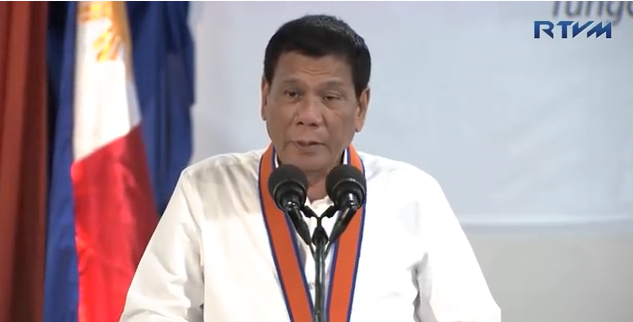![]() TWELVE government and police officials from Iloilo made it to the list of the Philippine National Police’s narco-politicians. Is President Rodrigo Duterte correct in tagging Iloilo, either province or city, as the most “shabulized” in the Philippines?
TWELVE government and police officials from Iloilo made it to the list of the Philippine National Police’s narco-politicians. Is President Rodrigo Duterte correct in tagging Iloilo, either province or city, as the most “shabulized” in the Philippines?
The list, which included the names of 158 public officials nationwide, was announced on August 7 during Duterte’s visit to the fallen soldiers’ wake at the Naval Forces Eastern Mindanao in Panacan, Davao City.
“In the Visayas, Alex Centena, Calinog, Iloilo; Julius Ronald Pacificador, Hamtic, Antique; Jed Mabilog, I think he’s the mayor, Iloilo City; Sigfredo Salangutin-Betita – Carles, Iloilo; Mariano Malones, Maasin, Iloilo. Sabi ko noon eh, when I was campaigning actually, lahat ng tao doon, lahat ng tao, mayor kung maari tulungan mo kami…”
Source: Wake Visit to Killed-in-Action (KIA) Soldiers (Speech), August 7, 2016. Watch from 15:53–17:08
Duterte continued enumerating names from other parts of the Visayas. Two minutes later, the president again mentioned officials from Iloilo City:
“Attorney Antonio Pesina of Iloilo City, Erwin “Tongtong” Plagata, Iloilo City. The most (pauses) shabulized—is that the word?—yung shabulized? […] Is there such a word “shabulized?” I will say that. Wala akong personal sa kanila ha. Iloilo.”
Source: Wake Visit to Killed-in-Action (KIA) Soldiers (Speech), August 8, 2016. Watch from 19:08–19:40
The president did not explain what he meant by “shabulized” and neither did he provide further evidence to back his claim apart from his list. When he was slammed for making the names public, he insisted the list went through a verification process.
FACT: If Duterte meant Iloilo as the province or city where the use of shabu or methamphetamine hydrochloride is most prevalent, data from the Philippine Drug Enforcement Agency (PDEA) fail to directly coincide with the president’s claim.
Of 81 provinces and 27 cities listed by PDEA from January to August 2016, Iloilo province ranked only 79th in terms of the number of drug-affected barangays per province, while Iloilo City ranked 51st.
The top 10 cities with the highest number of drug-affected barangays are located in the National Capital Region (NCR), consistent with earlier PDEA reports.
In 2015, PDEA pegged the number of drug-affected barangays in NCR at 99.26 percent, stating that of the 1,706 barangays in the country, 1,574 are affected by drugs.
A quick check on the figure, however, showed it was miscalculated: the percentage of drug-affected barangays in the country in 2015 should only be 92.26 percent, 7 percentage points lower than the original.
By August 2016, the number increased, with 1,577 of the 1,706 barangays now affected by drugs.
The Dangerous Drugs Board considers an area affected by drugs if there is a drug user, pusher, drug personality, manufacturer, drug den, or clandestine drug laboratory there.
Meanwhile, Cebu has the highest number of drug personalities, at 2,071, and high value targets, at 78.
Iloilo, on the other hand, ranked 10th with 344 drug personalities arrested, while Iloilo City ranked second in the provinces and cities with the most number of high-value targets.
Figures also showed that as of August 2016, a total of five clandestine laboratories found in Pampanga, Las Piñas, Manila and Zambales have been dismantled.
In their 2015 annual report, PDEA recorded a total of 92 dismantled shabu laboratories from 2002 to 2015, most of which were discovered in the areas of Central Luzon and NCR.
Of the 92 shabu laboratories, 48.9 percent were found in NCR while 17.4 percent were located in Central Luzon.
Next to NCR, however, was Region IV-A, with 17 shabu laboratories.
As for the highest number of dismantled drug dens, Agusan del Norte ranked first, followed by Iloilo City and Iloilo.





